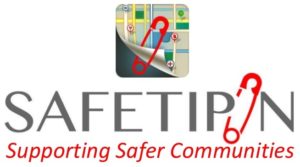SAFETIPIN is a Mobile App that aims to crowd source information about safety and the lack of it in public spaces. Safety audits have had a long history of use around the world. The Safety Audit tool was first developed in Canada in 1989 by the Metropolitan Toronto Action Committee on Violence Against Women and Children (METRAC). Building on the policy processes, developed by other organizations using different kinds of audits, METRAC created the Women’s Safety Audit as a gender-specific response to growing concern about violence against women and women’s feelings of insecurity. Since 1989 the women’s safety audit has been used widely both nationally and internationally. It has been adapted by groups of women all over the globe. Today, this tool exists in many different formats and is used in a range of environments. No longer the singular creation of one organization the women’s safety audit is a dynamic participatory concept that exists in a constant state of modification and improvement.
Put simply, safety audits are tools that people can use to evaluate the degree of safety (or lack thereof) of a public space. The audit takes several factors into account in order to determine why the space might be deemed unsafe. With the help of an international board of advisors, eight main factors have been identified. These include lighting, the ability to walk with ease, how crowded or deserted a space is, the diversity of genders, how open or enclosed it is, how visible one is to either inhabitants or shopkeepers, whether or not security or police are nearby. Finally it is important to gauge how a person feels in a space. Thus the safety audit rubric has eight dependent variables which contribute to safety and a ninth independent variable, which is the “feeling”. In this way, a safety audit assesses both the physical, almost objective, experience of a place, as well as the highly subjective emotional experience of different kinds of people. What is particularly noteworthy is that the audit encourages communities to work together and determine how to create safer spaces and neighborhoods.
Safety Audit Pilot Project will start with an Objective to engage citizens of all ages, Over a period of six months, in the Diego Martin Municipal Region. In action to make their neighborhoods and communities safe. Project beneficiaries are residents of the neighborhoods of all the ages and the public agencies which serve them.
Safety audits have had a long history of use around the world. Network along with its project partners i.e. Western Division Police, Citizens Security Programme (CSP) Diego Martin, Diego Martin Network of Community Organizations working on this project. Major activities are
- Train 25 persons including 12 youth, to use a map based mobile phone app to identify places where they feel safe or unsafe, report hazards or harassment, and conduct safety audits of public spaces.
- Monitor and Evaluate the mapping process
- Analyze and disseminate the data, for use by the Police, Diego Martin Regional Corporation, Citizen Security Network and other community stakeholders to identify which areas are unsafe, why, and how they can be made safer.


